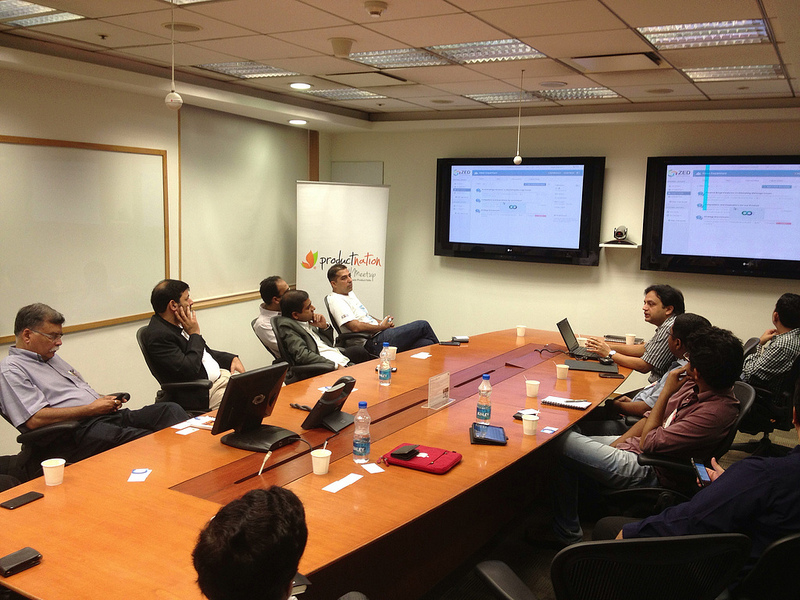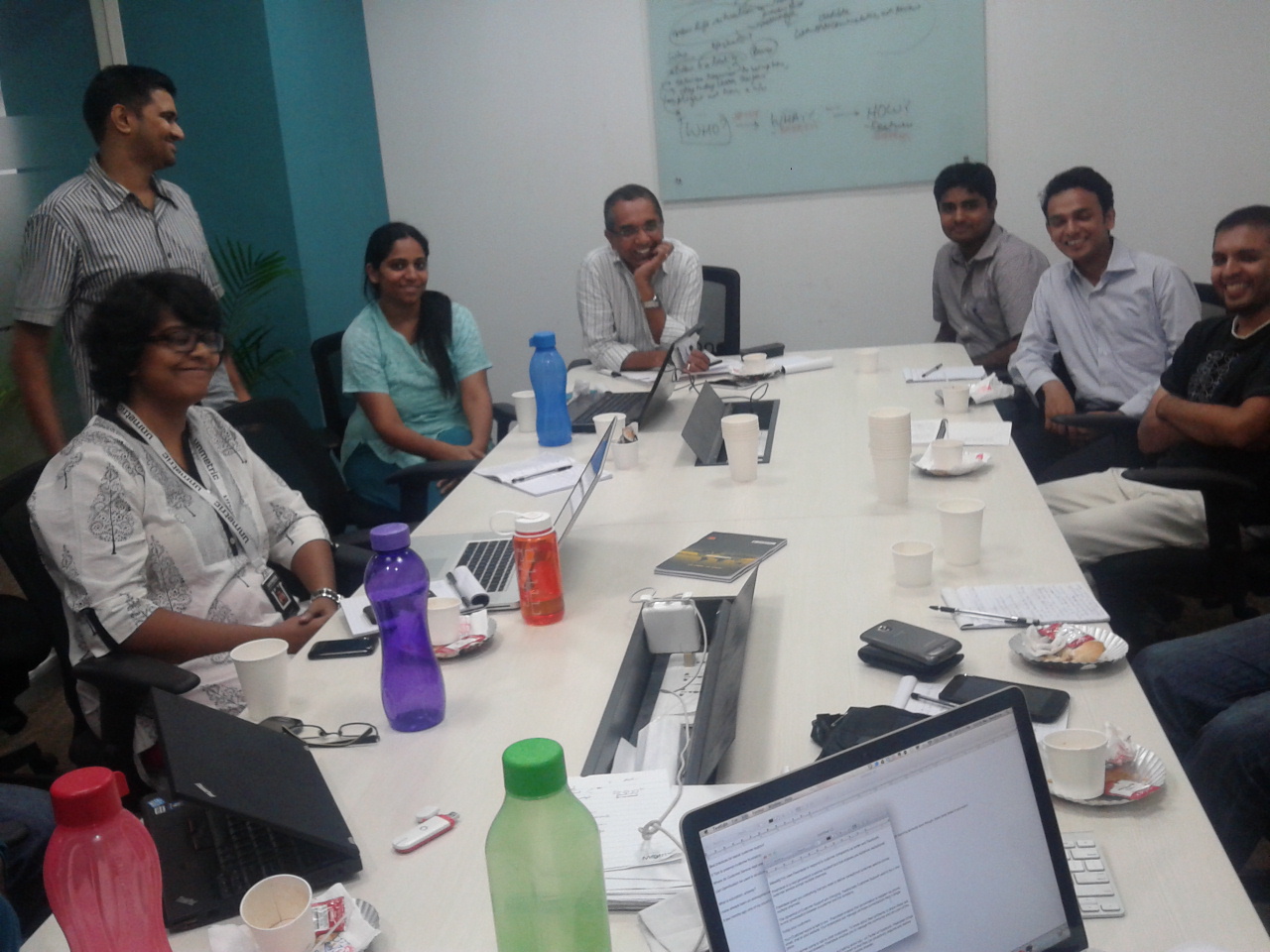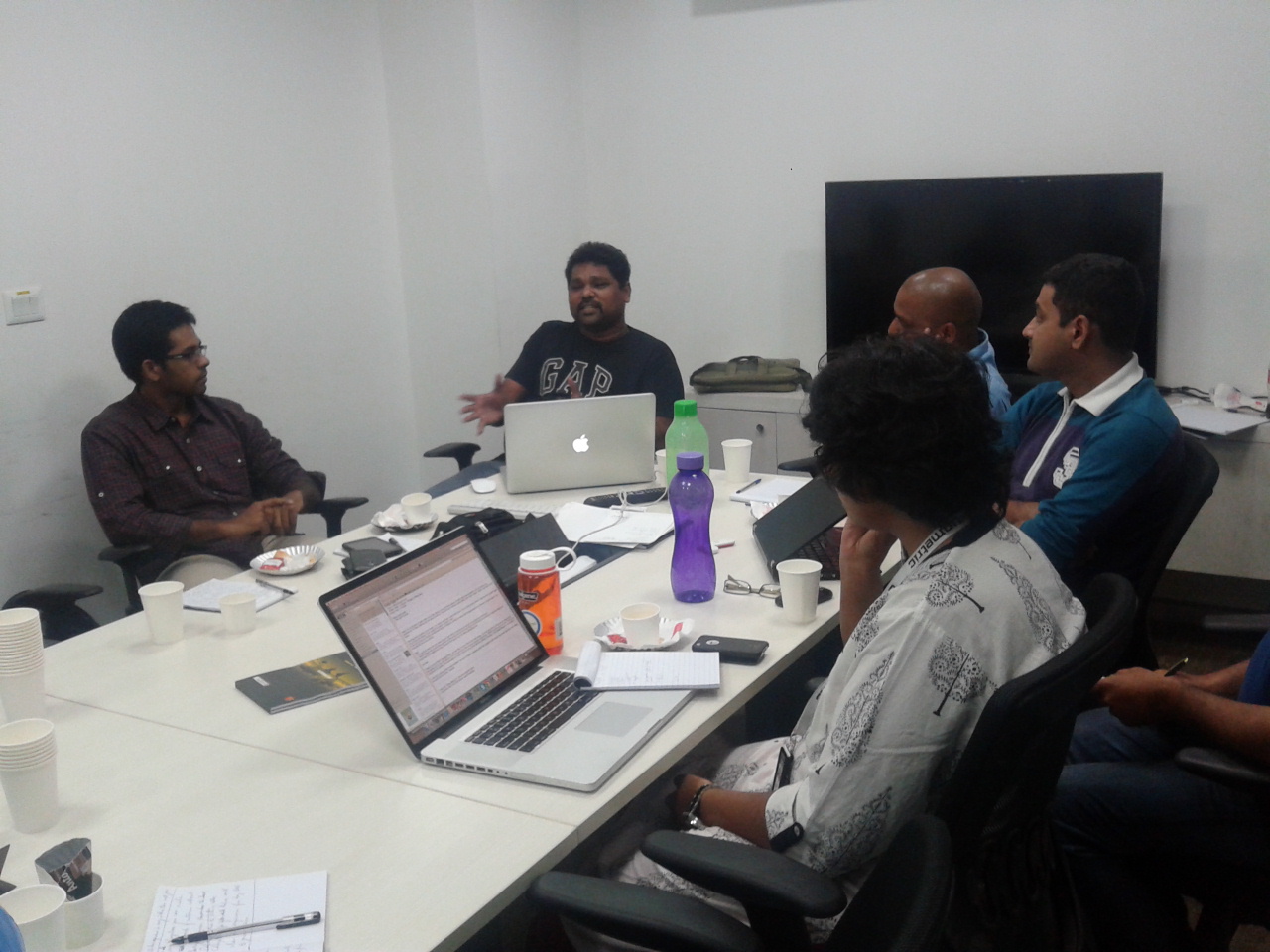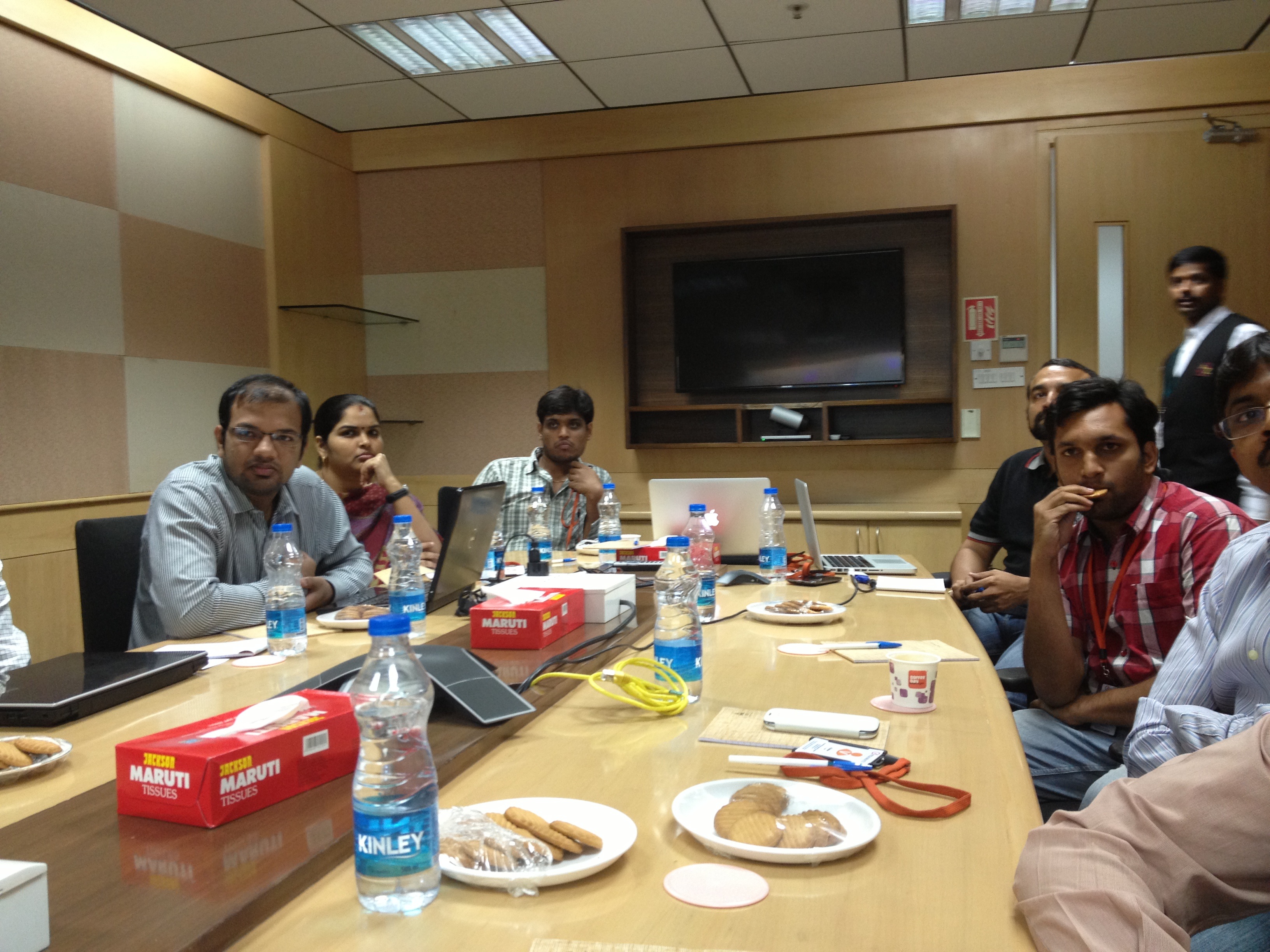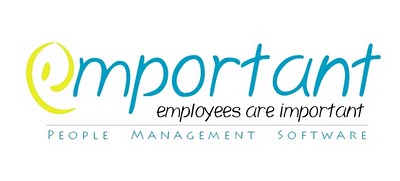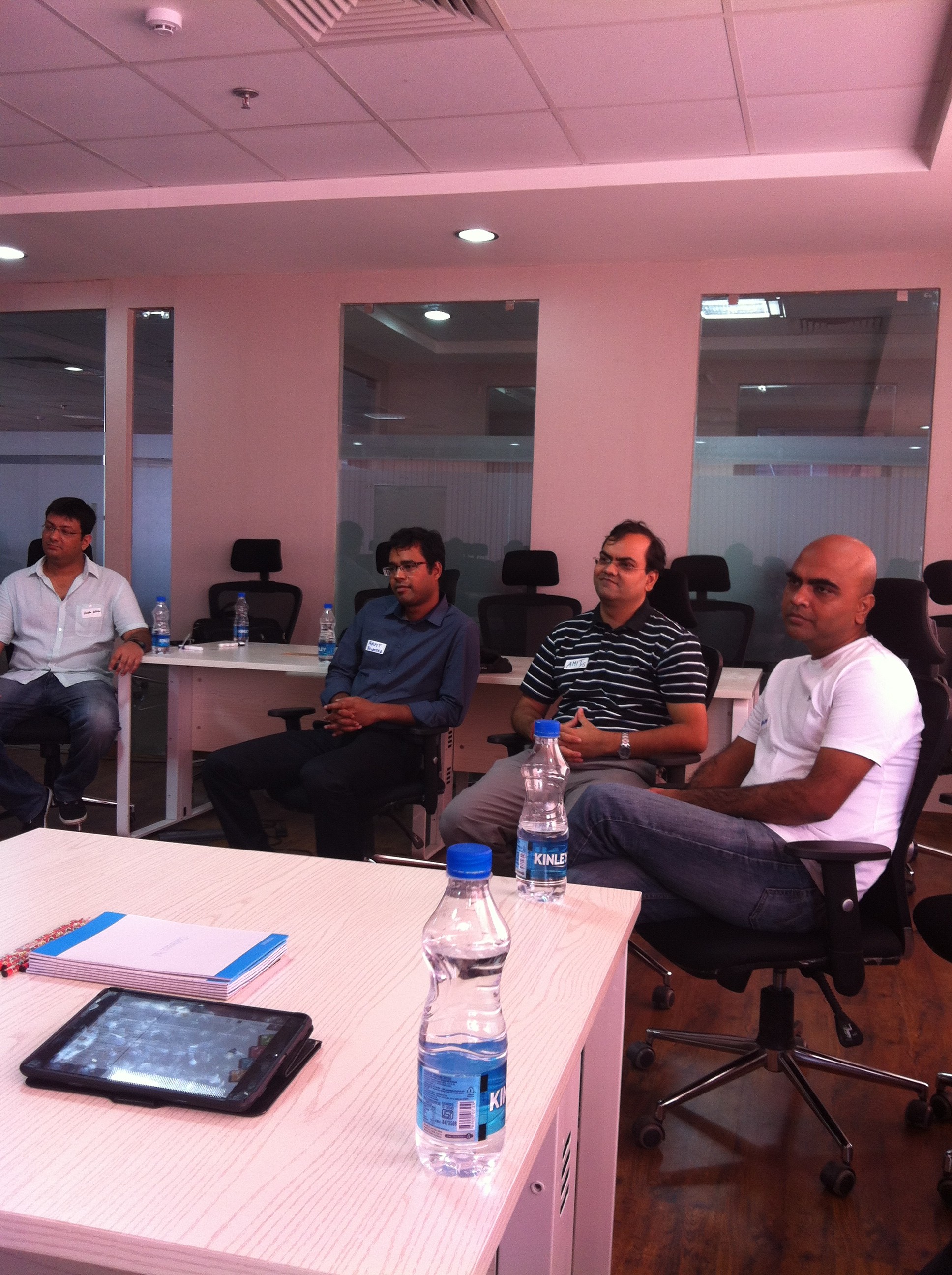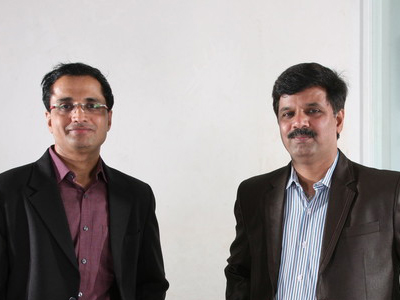ProductNation caught up with Akshay Shah, founder and COO of iWeb Technology Solutions to understand how they have been successful in serving the Indian SME market. Akshay says that the ability of their company to provide customizable business solutions at affordable prices is what has led to their success. Read on…
What was the main trigger to start the company?
The journey leading up to starting iWeb in 2005 is quite interesting. I come from a family of  chartered accountants. I was well on my way to pursue CA as my occupation, after my B.Com. While preparing for my CA intermediate exams, I had some free time. During this time, as a hobby, I started following the dot com boom in the US and developed an interest in how Internet was impacting businesses and people.
chartered accountants. I was well on my way to pursue CA as my occupation, after my B.Com. While preparing for my CA intermediate exams, I had some free time. During this time, as a hobby, I started following the dot com boom in the US and developed an interest in how Internet was impacting businesses and people.
Around that time, I happened to meet the CEO of a well accomplished IT business firm in one of the conferences. He heard about my interests and checked if I could help his company out in consulting with customers to deploy SAP solutions on a part time basis. The offer seemed interesting to me and I started to work part time. As I started interacting with customers and understanding the product, I very quickly realized that there was a huge disconnect between the features offered by the vendor and the price points at which they were being sold. I understood that there was an unmet need, particularly among the SMEs who wished to automate their business processes using IT.
This was the trigger for me to start thinking of starting iWeb. Along with Ketan Trivedi, my father’s friend, who also is a CA, we tried executing small projects for customers who we obtained from our contacts. The chemistry between Ketan and I seemed to work well. Also the initial work seemed to validate our thought process. Hence we started iWeb in 2005 formally to offer business solutions to customers.
The ERP products/solutions space is usually perceived as a mature and crowded marketplace. How have you managed to build a scalable and sustainable business in this area?
This perception holds good for VCs and investors who are looking at exits and non-linear growth in a relatively short time dimension. However, in the long term, this will be a very lucrative business, if you play it right. If you analyze the SME market in India today, you will notice that effectively only 5% of the market is automated. So, there is a large scope for many vendors, including the big players to go after the rest.
The issue is not about the availability of market, or access to it. The key challenge in addressing the reminder of the untapped market is to be able to provide customizable solutions at affordable price points. It is here that we believe we have been able to crack this puzzle.
Can you elaborate on how you solved the puzzle? What mistakes happened during the process and how did you overcome them?
From the beginning, we were pretty determined to build the entire ERP suite. In this zeal, we started to develop all the required capabilities of the product in parallel. However, we soon realized that during the startup phase, we could not manage development as well as customer acquisition with equal ease. We had bootstrapped ourselves and had no external capital infusion till last year. Hence we started selling only the CRM module to begin with, and over time, as we obtained a level of maturity in implementing it out for a few customers, we started paying attention to developing and selling the reminder of the modules.
As our customer base increased, our experience in understanding their requirements also increased. We realized that in the SME segment, business processes across enterprises would not be standardized. So, to be able to still get them to buy our solution and benefit from it, we had to build our product to be customizable to their requirements, and be affordable at the same time. These requirements led us to develop a powerful differentiating capability through our AgilewizTM framework that helps us deliver customized multi vertical and horizontal application solutions across different business lines with minimal amount of deployment time.
The beauty of this approach is that even a non-techie can use and configure a solution of his requirement. This approach helps us eliminate the requirement of highly skilled IT professionals needing to deploy solutions to customers. Customers benefit from it, since it reduces the cost of acquisition of our solution. In summary, over these years, we have evolved our product line and built sustainable business by focusing on providing customizable solutions at affordable costs to the SME segment.
What role have channels and partnerships played to help your sales?
You could say that the biggest asset for iWeb today is the partnerships we have built with other companies and individuals. They are a key factor in scaling the business, specifically for our country that has diverse customer requirements. It is also a relationship that we have built by valuing their domain skills. We are very transparent in all our dealings with partners. We strive to make our partners successful by sharing best practices of implementation through our network. As an example, one partner in Indore may reuse the artifacts developed by another partner elsewhere, reducing his time to deployment. This collaborative nature of relationship has helped us to a great extent in obtaining customer wins.
You have recently announced that you are diversifying as a software services provider, offering SaaS / PaaS type of solutions. What is the thinking behind this move?
The intent to diversify from being a pure product/solution company and enter into providing services via the SaaS / PaaS route is driven by two considerations. Firstly, we want to leverage the benefits of emerging technology and pass the benefits to our customers. Secondly and more importantly, moving to a Saas / PaaS based platform will help us provide better support to our existing set of customers. So you could look at this as our play to retain existing customers and build further to address their other needs.
On a different note, iWeb as a company and you as its founder have received multiple accolades internationally and at national level. What does this mean to you as a person, and how does this help your company?
Recognition from various forums such as the MIT TR35 or being selected as one of the top 50 emerging companies by NASSCOM certainly motivates self and the company in a big way. Firstly, it validates your belief and play, paving way to many business leads. Sales cycles will get much simpler because your prospect now sees you as being credible. Secondly, at a personal level, it is a huge confidence booster, and energizes you to go further your ideas to the next level. I would say that most of our largest breakthroughs in terms of customers or partners’ acquisition have happened on account of this.
What message would you like to give to potential product development entrepreneurs?
Off late, I see youngsters, specifically those graduating out of MBA colleges taking to entrepreneurship primarily because they see it as a cool factor or as a style statement. They do not seem to be prepared for the long haul. So, my advice to any entrepreneur thinking of getting into a software product business is to do so, only if he or she has a burning desire to solve a real problem – a problem which is causing him or her to have sleepless nights. One needs to understand that the journey of entrepreneurship is not a bed or roses, and you get to do everything else other than what you wanted to do. One should be mentally prepared to face these uncertainties and ambiguities – and be passionate about the idea, have the patience and perseverance to take it to a logical conclusion, come what may. Only then, it makes sense to go this route.






